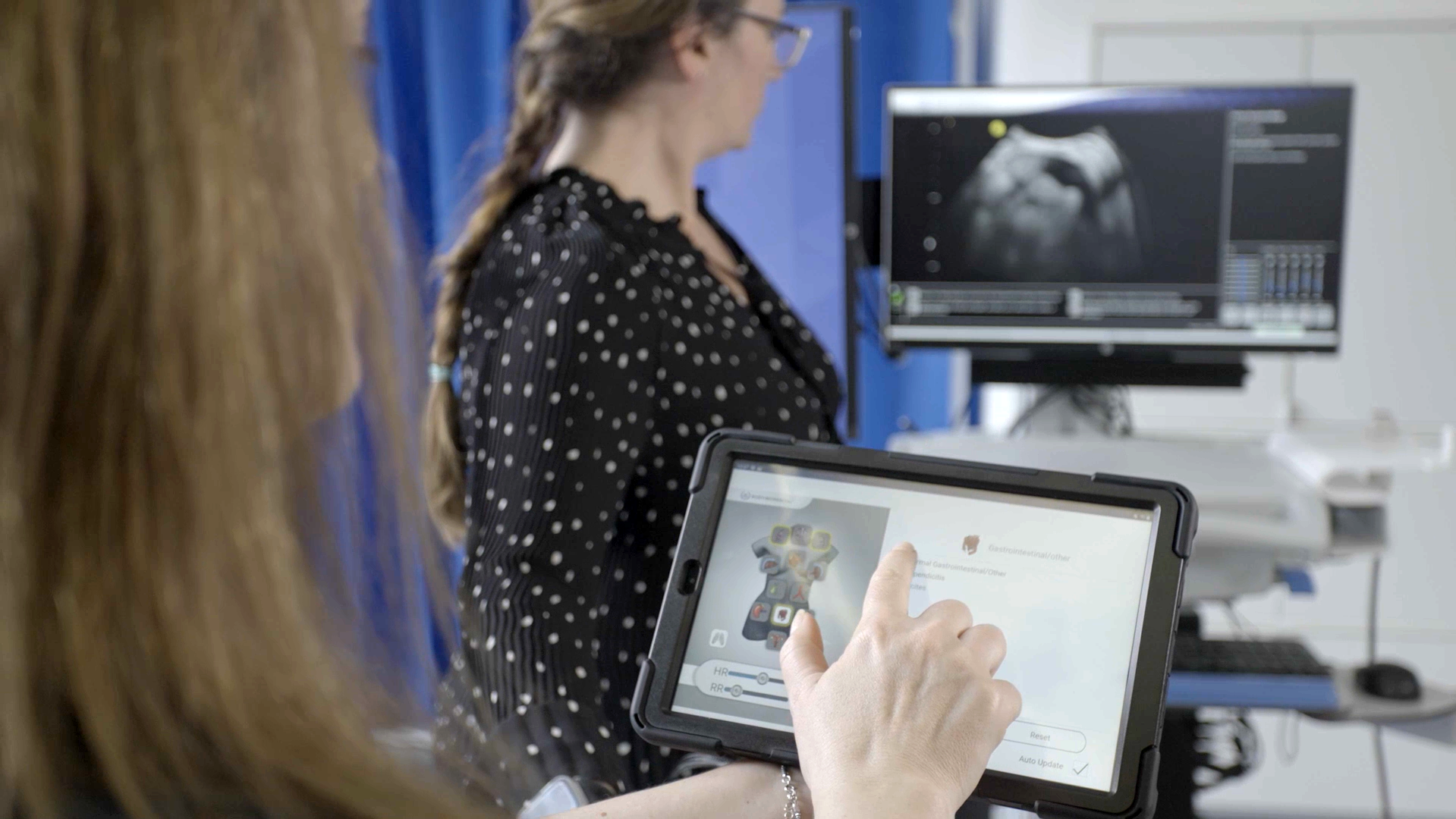How Integrated Ultrasound Simulation Improves Learner Confidence and Competency
As Point-of-Care Ultrasound (POCUS) becomes essential across healthcare disciplines, the focus is shifting from exposure-based training to competency-based education. Integrated simulation bridges that gap – giving learners the safe, structured environment they need to build both confidence and clinical skill. Validated by studies and embraced by leading institutions, ultrasound simulation is transforming how clinicians are trained.

Competency Gains Backed by Evidence
Unlike traditional bedside learning, ultrasound simulation offers repeatable, measurable scenarios that support rapid skill acquisition. In a study evaluating transabdominal ultrasound simulator training, novice users showed significant improvement across all test parameters after just five hours of structured practice. In fact, 94% of participants achieved a >90% proficiency level after training, demonstrating high internal consistency and strong inter-rater reliability (Knudsen et al., 2016).
Another study on an ultrasound-guided regional anesthesia (UGRA) simulator found that learners showed significant improvements in both technical accuracy and needle control, with performance scores increasing from a pre-training median of 46.4 to a post-training median of 71.4 (p < 0.001) (Nayahangan et al., 2021). This highlights how simulation not only supports learning but accelerates safe clinical readiness.
Confidence Through Practice and Feedback

For students and clinicians alike, confidence stems from safe, hands-on repetition with real-time feedback – something bedside learning alone cannot offer. Simulation allows for:
- Mistake-friendly learning where failure is a step forward, not a clinical risk
- Immediate, objective feedback that guides improvement
- Deliberate, repeated practice of core ultrasound skills like probe manipulation and image interpretation
- Access to pathological cases, including low occurrence, high acuity pathologies rarely seen in clinical practise.
At The University of California, Davis (UC Davis), this impact is felt first-hand:
“Training opportunities are limited by the pathologies the patient came in with. Likewise, if an acute decompensation happens in the middle of the night, where a patient develops a pneumothorax, or someone comes in with a pericardial effusion, a trainee won’t be the first person to diagnose or provide procedural support – this also limits exposure for trainees.”
— Dr Viyeka Sethi, MD, Associate Professor, UC Davis
🔗 Read the full case study
Similarly, HQ.MED.ED’s rural simulation initiative proves the value of simulation in under-resourced environments:
“Becoming good at point-of-care ultrasound takes a lot of practice. But if you’re geographically isolated… you often don’t have the experts at hand to provide feedback.”
— Thomas Pahl, PA-C, HQ.MED.ED
🔗 Full story here
Educator Efficiency and Scalable Training
Educators are under pressure to deliver high-quality ultrasound instruction without increasing time demands. Simulation helps by:
- Enabling standardized assessments with consistent benchmarks
- Reducing reliance on live patient access, especially in specialties like NICU or trauma
- Freeing up faculty time through automated skill tracking and embedded feedback
The University of Evansville integrated simulation to enhance learning while supporting instructors:
“We took our time to ensure we were investing in the right simulation platforms for the University …allowing our newly qualified CRNAs to step confidently into clinical practice, providing the best care for their patients.”
— Dr Melissa Eisenhauer, Program Director, The University of Evansville
🔗 Explore their story

Translating Skills Into Safer Care
Effective training improves patient care—and simulation plays a critical role in preparing clinicians to act decisively at the bedside. A 2015 validation study found that simulation training for ultrasound-guided vascular access reduced catheter insertion time, decreased error rates, and improved global rating scores compared to conventional teaching methods (Barsuk et al., 2015).
During the COVID-19 crisis, simulation supported real-world clinical readiness. In France, Dijon University Hospital used a mobile simulator unit to rapidly upskill staff:
“The training goal is to be able to use ultrasound to categorize the patients … We have a patient who has a symptom that resembles COVID-19, the ultrasound allows us to do the triage … to determine if the patient requires a transfer to a conventional service or to intensive care unit.” — Dr. Sébastien Mirek, Dijon University Hospital
🔗 View the mobile simulation case
Why Simulation Belongs in Every Curriculum
Integrated POCUS simulation doesn’t just teach – it transforms. By aligning with validated metrics and proven real-world results, it delivers:
- Faster skill acquisition with proven proficiency in under 5 hours
- Increased learner confidence via feedback-driven learning
- Educator efficiency through structured, scalable training
- Better bedside care, especially in high-risk or resource-limited settings
Whether you’re building a new curriculum, training across disciplines, or equipping frontline clinicians – simulation delivers measurable results, safer outcomes, and more confident care.